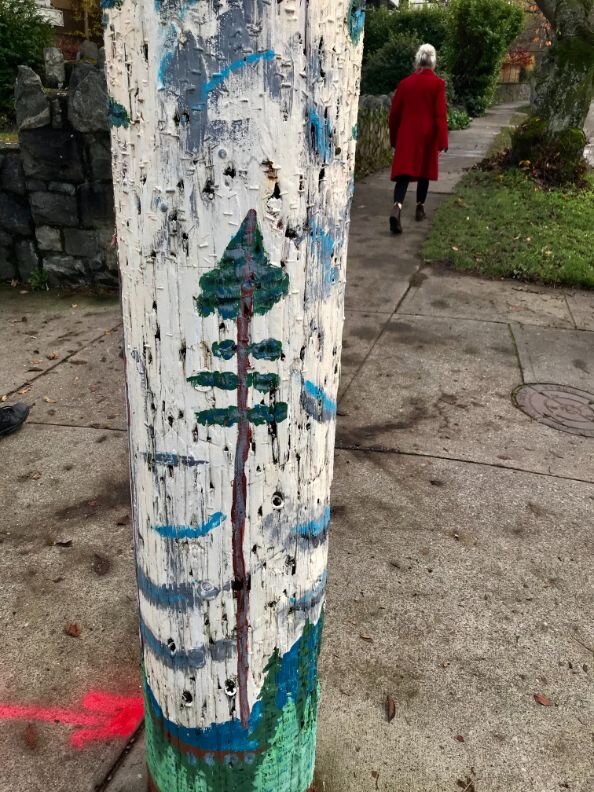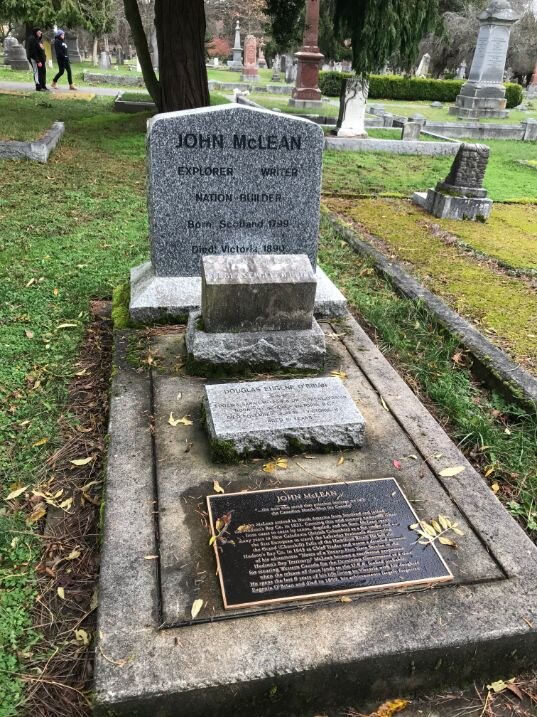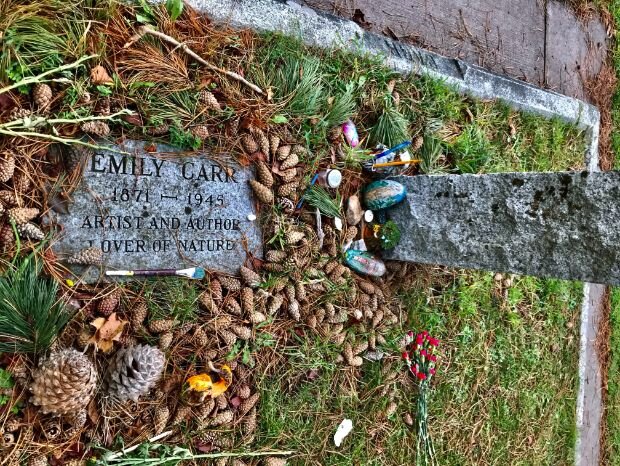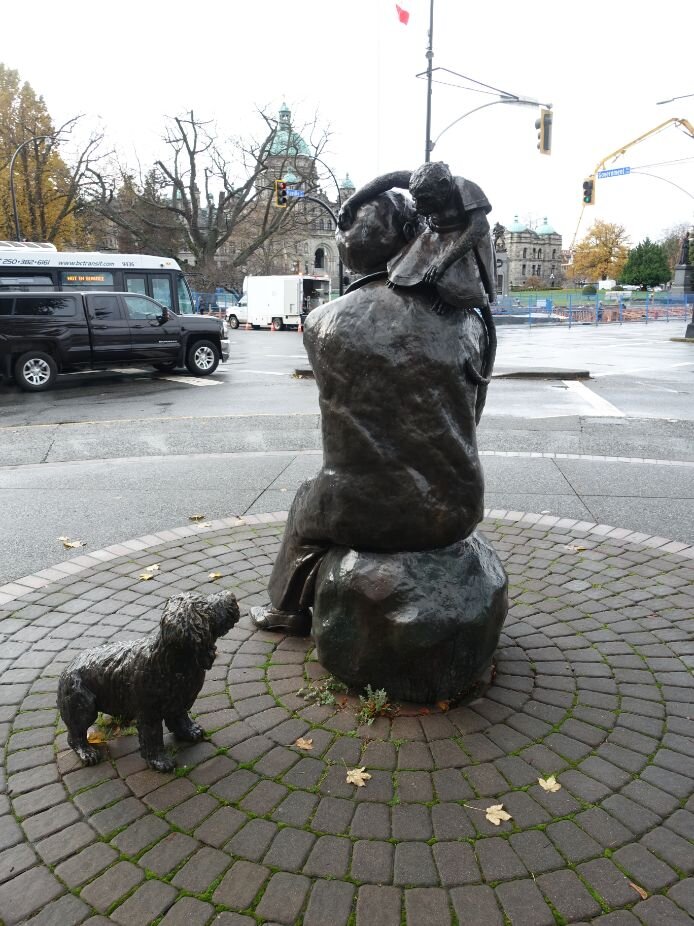Victoria’s Monuments To Their Iconic Artist Emily Carr
Emily Carr is not only Victoria’s iconic artist, she is one of Canada’s most iconic artists. On a recently visit to Victoria I was impressed at how many different ways the city has recognized her life – bridge, telephone pole, grave, house, statue and exhibition.
The Bridge
While strolling Victoria’s Beacon Hill Park I was surprised to find the Emily Carr Bridge. It immediately reminded me of the famous Ben Hogan and Byron Nelson Bridges at Augusta National Golf Course, home of the Masters golf tournament.
I am not sure if it is by design or accident, the bridge is located in the park where there are towering trees, a small creek and pond that combine to make you feel like you are in one of Carr’s paintings. It is a very fitting tribute to the artist.
I began to wonder if any other city in Canada, or the world, has a bridge named after a local artist.
Link: Famous Bridges at Augusta
The Telephone Pole
A few days later as we were wandering to the Victoria Art Gallery, I found a telephone pole with a single tree painted on it in a folk art style that I wanted to capture for future blog on telephone poles as canvases for public art. When I looked at the pole from the other side I noticed the words Emily Carr. Obviously someone in the neighbourhood wanted to pay homage to Carr with their own painting. I immediately thought how appropriate as Carr is famous for her paintings of indigenous totem poles. Again I wondered if this was planned or serendipity.
The Grave
We have visited Emily Carr’s grave in Ross Bay Cemetery several times and every time we are impressed by not only the artifacts left there, but by the fact we are never alone when we visit. There is always someone else paying homage to her.
Carr’s grave was unmarked until 1963, when the Victoria Historical Society placed a small simple granite plaque in the ground. Today there is also a headstone that marks the Carr Family grave site.
I wonder if there is another artist in Canada whose grave site is visited more. I know in European cities it is common to visit famous artists graves. Perhaps AY Jackson who is buried on the grounds of the McMichael Canadian Art Collection? Maybe Maude Lewis in Halifax, Nova Scotia? Leonard Cohen in Montreal?
In the golf world there are several famous graves e.g. Bobby Jones in Atlanta and old Tom Morris in St. Andrews.
The House
The Carr House a National Historic Site of Canada is located at 207 Government Street, not far from the Royal British Columbia Museum or the Legislative Building. It was built in 1863 in the Italianate style by prominent local architects Wright & Saunders.
The original address was 44 Carr Street as her father owned a large piece of land where the house was built. In her book “The Book of Small” Carr describes what it was like when she was growing up:
Our street was called Carr Street after my Father. We had a very nice house and a lovely garden. Carr Street was a very fine street. The dirt road waved up and down and in and out. the horses made it that way, zigzagging the carts and carriages through it. The rest of the street was green grass and wild roses… In front of our place Father had made a gravel walk but after our trees stopped there were just two planks to walk on. As far back as I can remember Father's place was all made and in order. The house was large and well-built, of California redwood the garden prim and carefully tended. Everything about it was extremely English. It was as though Father had buried tremendous homesickness in this new soil and it had rooted and sprung up English. There were hawthorn hedges primrose banks, and cow pastures with shrubberies.
Except for the cow pastures, the Carr House neighbourhood has many of the same attributes today. It is lovely place to stroll, looking at the different architecture, the gardens and flowers.
Carr House passed through the Carr family for several years, before being sold to a private owner for use as a rental property. The building was extensively modernized following a fire in 1938.
In 1964, MP Dave Groos saved the building from demolition and turned it over to the Emily Carr Foundation three years later, for use as an art gallery and school known as the Emily Carr Arts Centre. In 1976, the provincial government purchased the property, and helped return the building to its original condition.
FYI: The Emily Carr University of Art + Design, in Vancouver is one of Canada’s preeminent art schools.
Carr House is currently a cultural centre celebrating Emily Carr's life through seasonal tours, rotating exhibits, programming and events. It is operated by a site manager and owned by the Province of British Columbia.
Unfortunately it was closed due to COVID when we visited.
The Statue
The Emily Carr statue is located at the prominent intersection where the Fairmont Empress Hotel, Royal British Columbia Museum, Provincial Legislature and waterfront park meet. It was created by Barbara Paterson, who also did “The Famous Five” sculpture in Calgary.
The three-metre-tall statue not only depicts Carr but her Javanese monkey “Woo” perched on her shoulder and her dog “Billie” at her feet. The artist has created an animated sculpture that is a great place for tourists to take selfies of themselves with Emily.
The Exhibition
While I was visiting the Royal British Columbia Museum had a major exhibition titled “Emily Carr Fresh Seeing” which will be the subject of a future blog. What impressed me was the huge billboard for the exhibition on the sidewalk (across the street from the Carr Statue) and in front of the museum advertising the show. I have seen large exhibition banners hanging on the side of museums before, but never a huge artwork right at street level.
Then I went online to find out more about the exhibition and found a virtual tour of Emily Carr’s history that I thought was one of the best virtual exhibition tours I have seen to date.
This comprehensive exhibition traces Carr’s evolution as an artists, including her travels in Europe, her various teachers and family, as well as her work with First Nations. It is entertaining, educational and enlightening.
Link: Emily Carr Timeline
Love this quote….
My bed, somewhere in France, 1910, watercolour on paper.
Last Word
Every city in Canada should attempt to identify important local artists (visual, literary and/or performing) and find ways to recognize their contribution to their community. I am thinking the next time I visit a city, I should do more research on famous local artists and how they are being recognized.
















